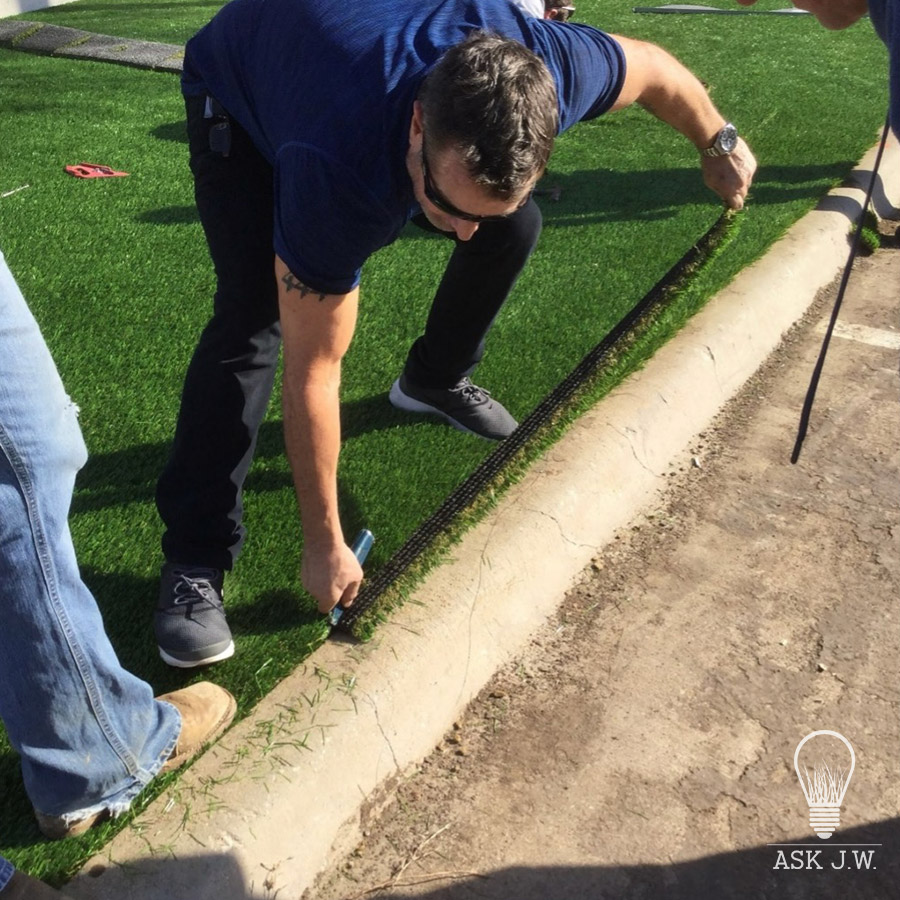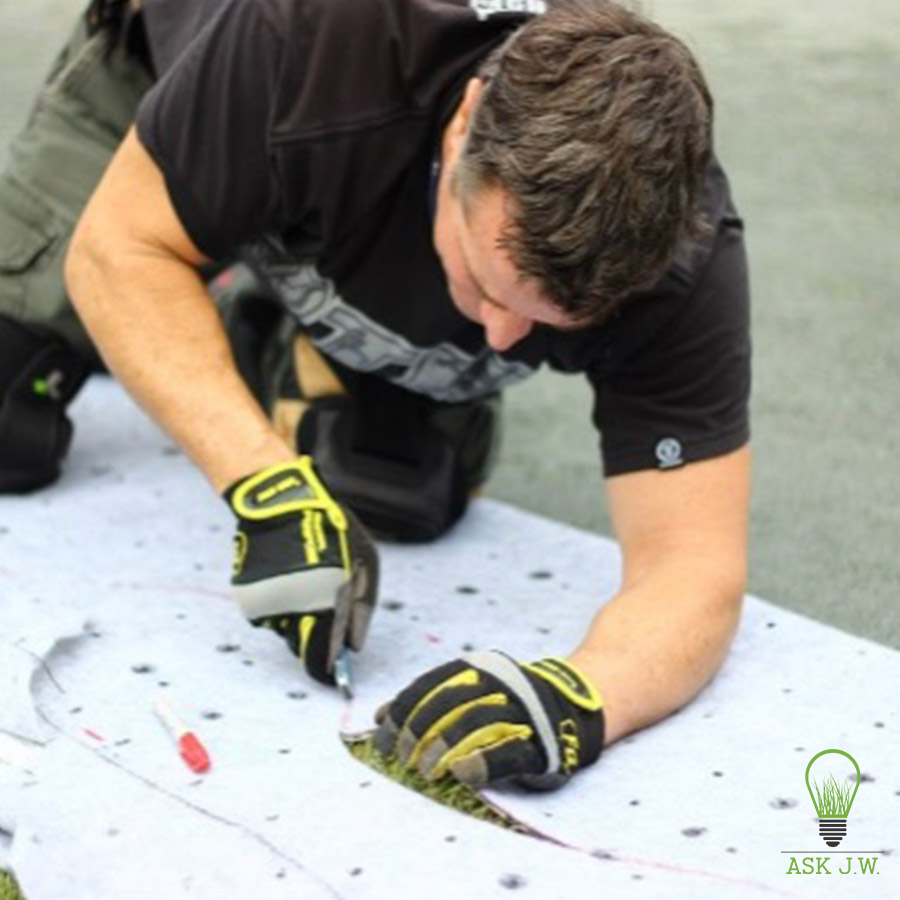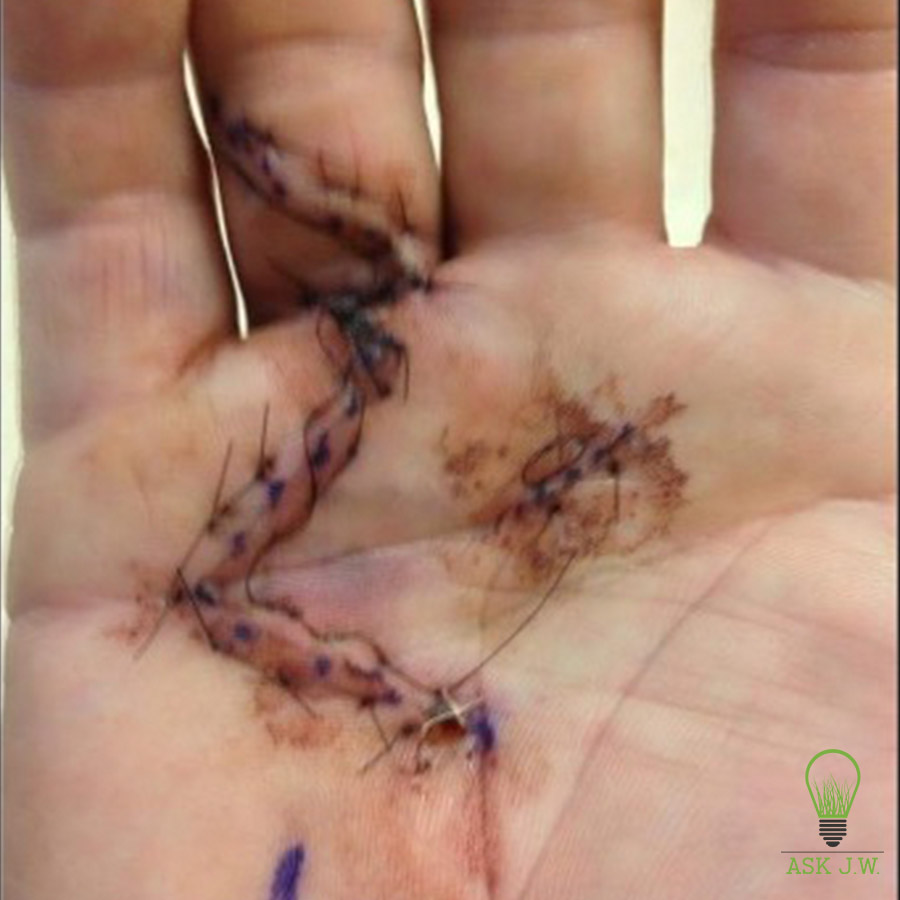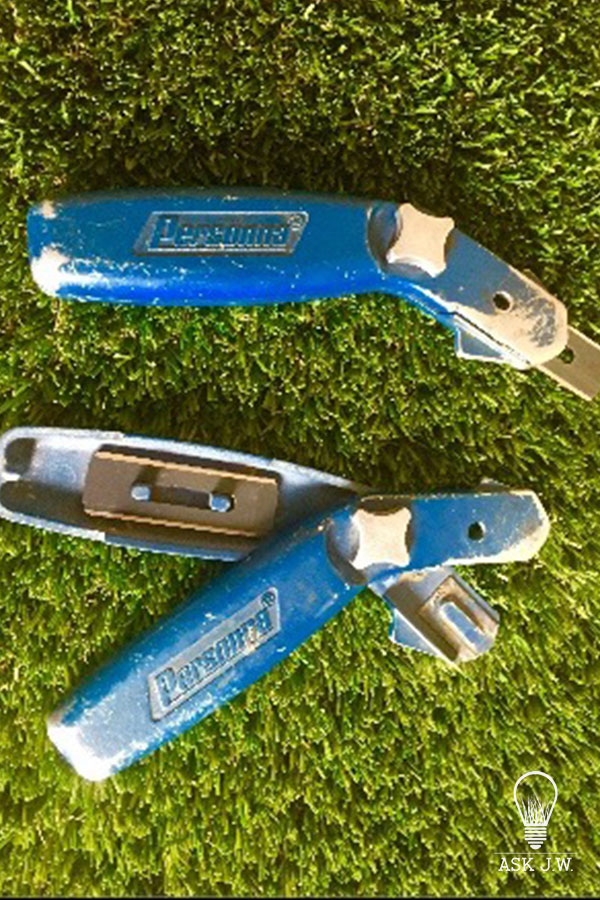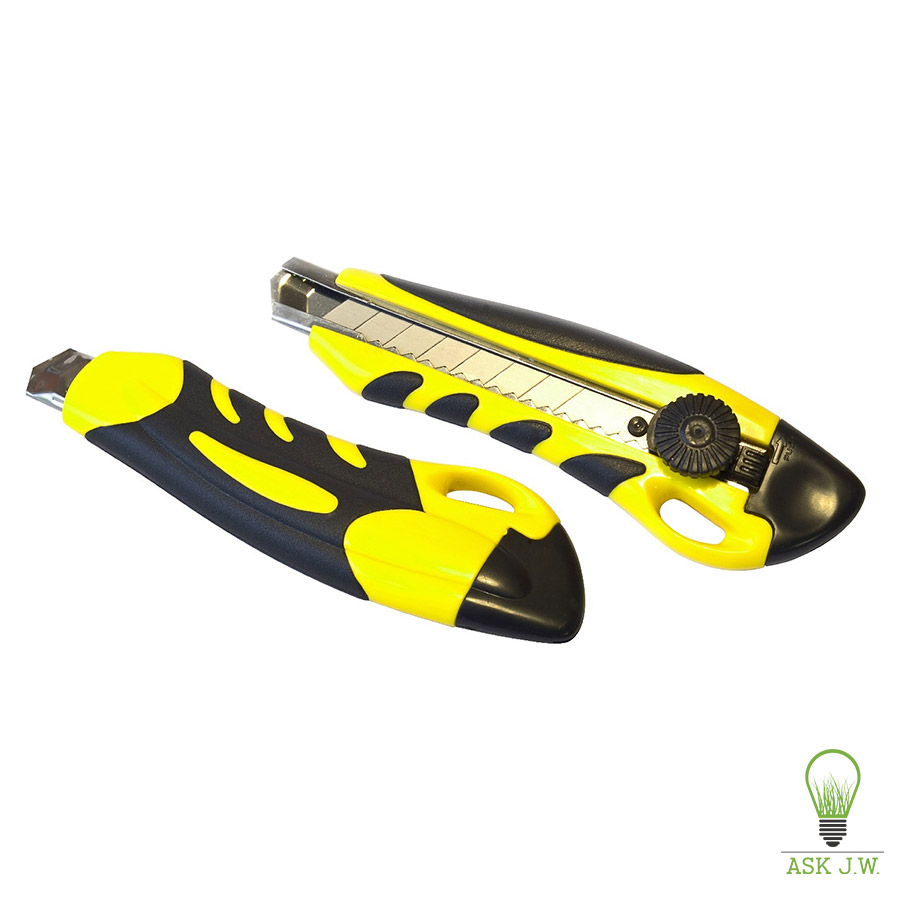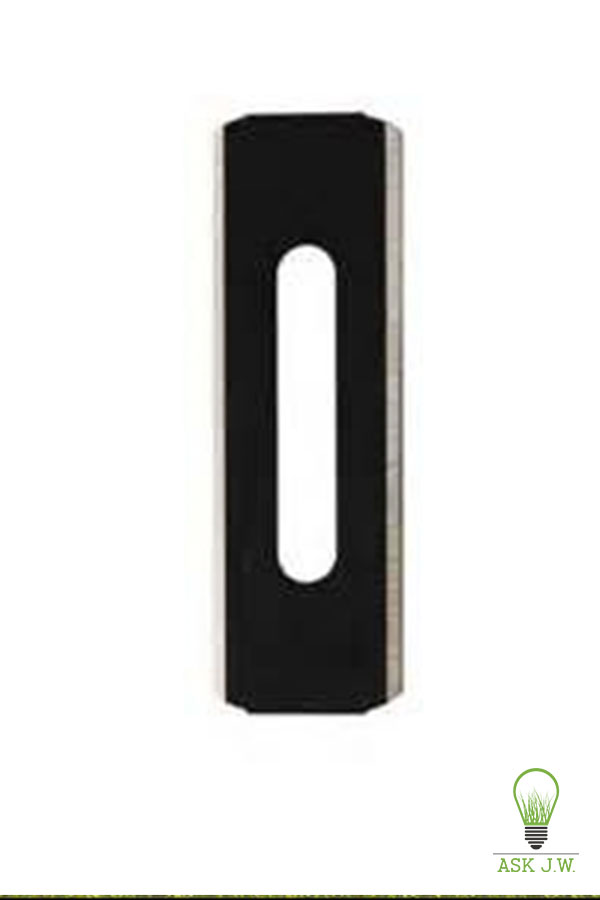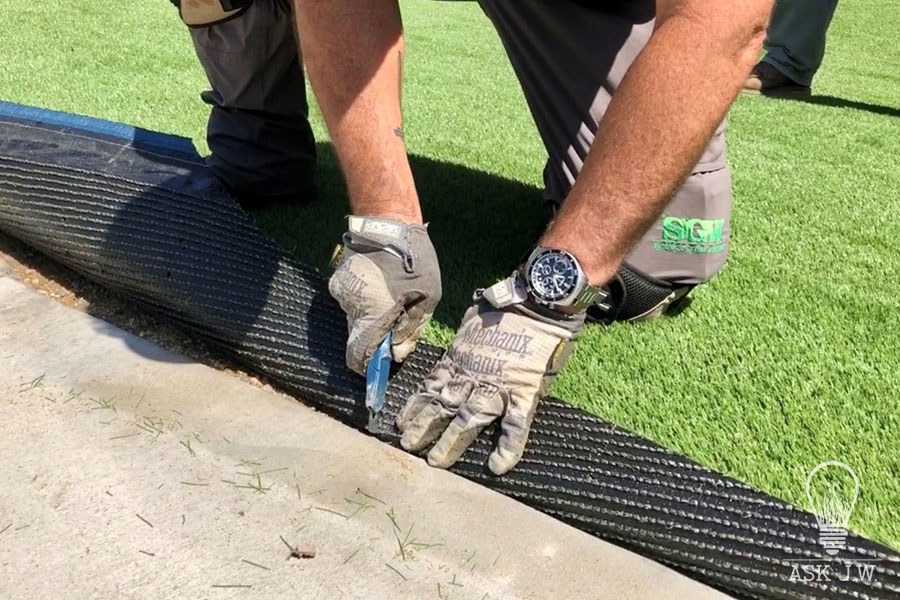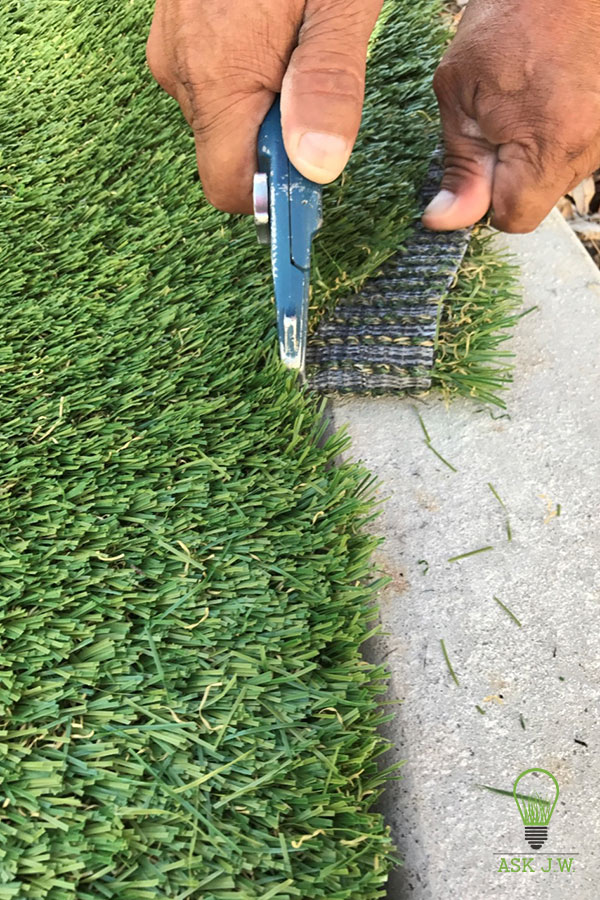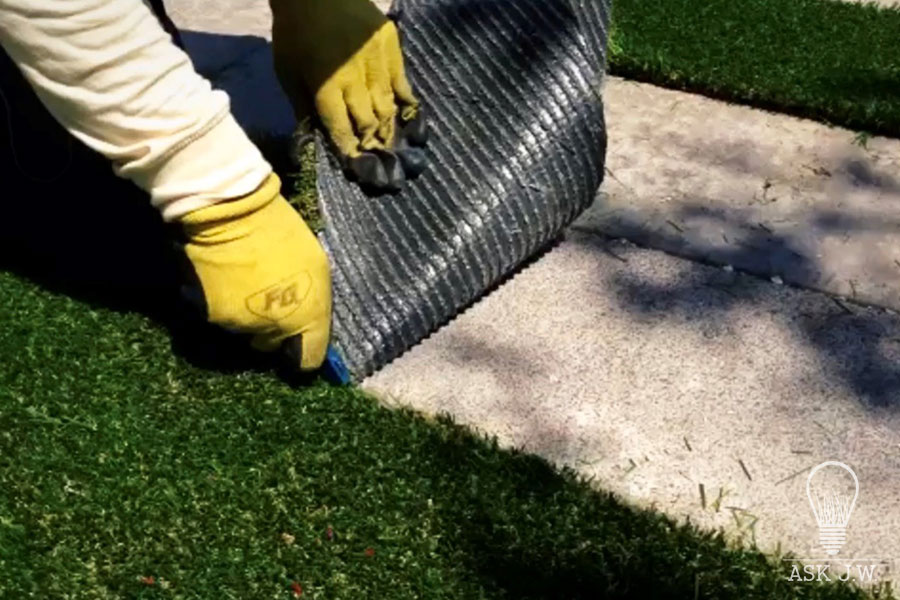Learning to cut synthetic turf can be challenging. Precise cutting and staying consistent are crucial in becoming a craftsman. This month, Ask JW will teach a method J.W. created decades ago called the “slide-cut”. This method is accurate, easy, and fast when cutting exterior edges.
Hand Protection
Learning to cut synthetic turf can be challenging. Precise cutting and staying consistent are crucial in becoming a craftsman. This month, Ask JW will teach a method J.W. created decades ago called the “slide-cut”. This method is accurate, easy, and fast when cutting exterior edges.
Knives
There are so many different knives on the market that can be used for cutting synthetic turf. I recommend using a knife that fits your hand. If a knife fits your hand comfortably, your cuts will come out better. If you have a small hand, then you will need a knife that you can control, which may be smaller in size. The performance of the knife relies on how you grip it as well as how sharp the blade is.
Knives that I do not recommend are listed below.
- Kitchen knives
- Exact-o knives
- Tactical knives
- Throwing knives
- Hunting knives
- Pocket knives
Even though the knives listed above may cut synthetic turf, I do not feel these will effectively further your turf career.
Blades
To be successful at cutting synthetic turf, you will need to maintain a sharp blade. This means you will need to change your knife’s blade at a minimum of every 10 to 15 feet. Cutting synthetic turf with a dull blade will cause dragging. Dragging causes the edge to fray, which will, in turn, cause seams to be visible. I recommend a four-sided round blade. The four sides allow you to change the blade out four times while still using the same blade. The round blade shape also cuts through thick backings without dragging, which will help avoid slowed-down production.
Slice-Cut Method
Cutting exterior edges takes time. Many still use the relief-cut method, which I will teach in my next column. The slide-cut method is accurate, fast, and takes half the time of a relief cut. The slide-cut method is where the blade of the knife “slides” down the edge of the hardscape while cutting. The hardscape acts as a guide while cutting the exterior edge. To perfect the slide-cut method, there are steps that must be performed simultaneously. These steps are all in conjunction with how you grab, pull, and cut the synthetic turf. The blade should always make contact with the turf backing. If the blade of the knife is not angled correctly, you may cut into the fibers, which may result in them becoming visible.
Prior to edge cutting, there should be at least 2” or more of turf hanging past the hardscape’s edge. This will allow you to comfortably grab the turf while performing the slide-cut.
Below are steps to achieve the slide-cut method.
Step 1. Grab the overhanging waste with one hand and grab your knife in the other. Place the point of the blade down and alongside the hardscape edge.
Step 2. Make a cut into the backside (backing) of the turf to create a relief cut. Once the relief cut is made, you will notice the turf folds over onto the hardscape.
Step 3. Place the blade of your knife parallel with the hardscape at the point of the relief cut (Where I am pointing my finger in the upper right image). It is important to angle the blade at a position to cut the backing underneath, not the fibers.
Step 4. Grab the overhanging waste with one hand while you place the blade down into the side of the hardscape
Step 5. Depending on if you are left handed or right handed, grab the turf waste with one hand, slowly pulling towards you, while placing pressure on the blade of the knife and cutting the backing simultaneously.
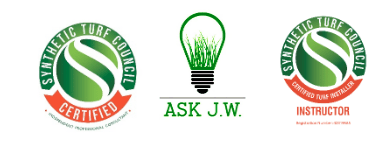
I truly hope you are enjoying my blogs and columns. For more information regarding the slide-cut method, or to schedule a training, please contact J.W. at 888.846.3598 or email AskJW@SGWcorp.com
Suggestions for the use of ASK JW installation techniques are solely at the end users’ discretion; however, the user should determine suitability for the intended use by his/her own evaluation. Because the use of the materials is beyond our control, neither ASK JW nor SGW shall be liable for the outcome of any use of said materials including any injury, loss, or damage, direct or consequential, arising out of the use or inability to use these techniques and products.




